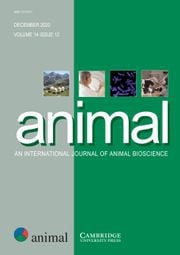
Ruminants have evolved with the capability to recycle endogenous urea to the gastrointestinal tract (GIT). Ruminal ammonia derived from urea recycling makes a net contribution to digestible N flow if it is used to synthesise microbial protein. The dynamics of urea recycling and its quantitative importance to the N economy of ruminants are affected by dietary and physiological factors. In general, the transfer of endogenous urea to the GIT is related positively to blood urea concentration and rumen-fermentable energy supply and negatively to ruminal ammonia concentration. After consumption of a meal rich in rumen-degradable N, ruminal ammonia concentrations peak and can exceed the rate of carbohydrate fermentation, resulting in inefficient ammonia capture by microbes. These periods are characterised by greater ruminal ammonia efflux and reduced urea influx. A low ruminal ammonia concentration over time can stimulate recycling of endogenous urea-N to the rumen and its capture into microbial protein and reduce N excretion.

